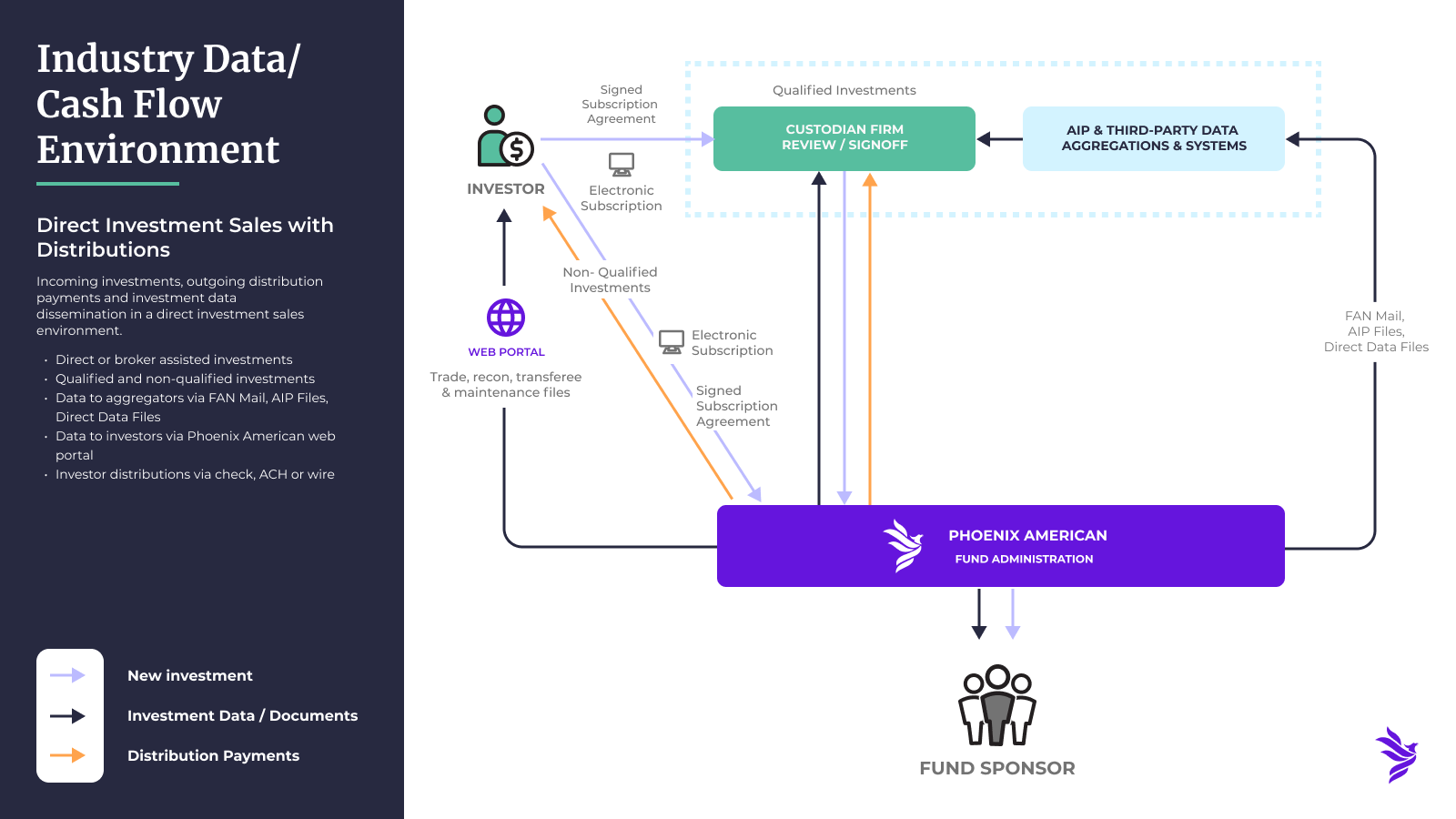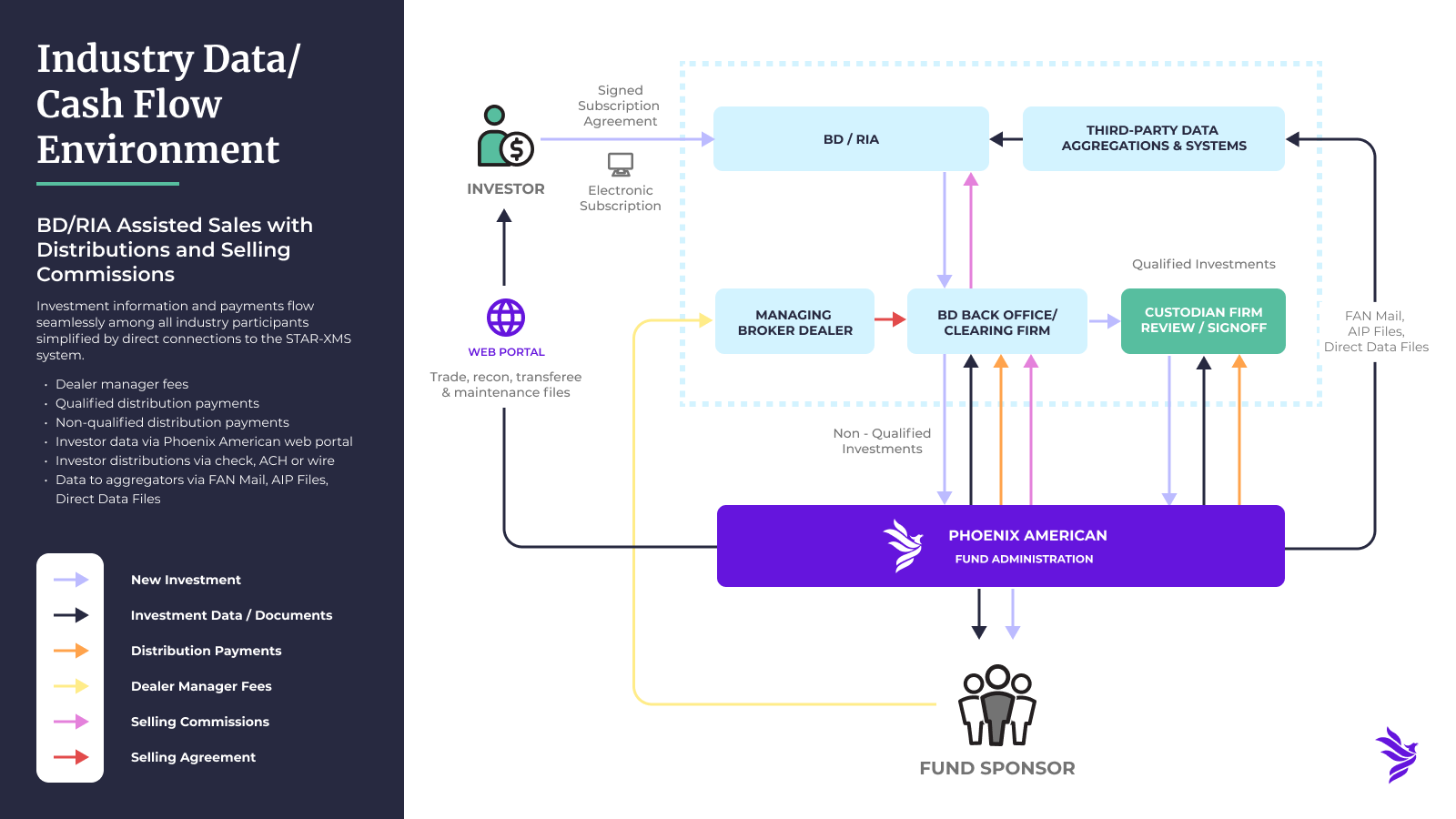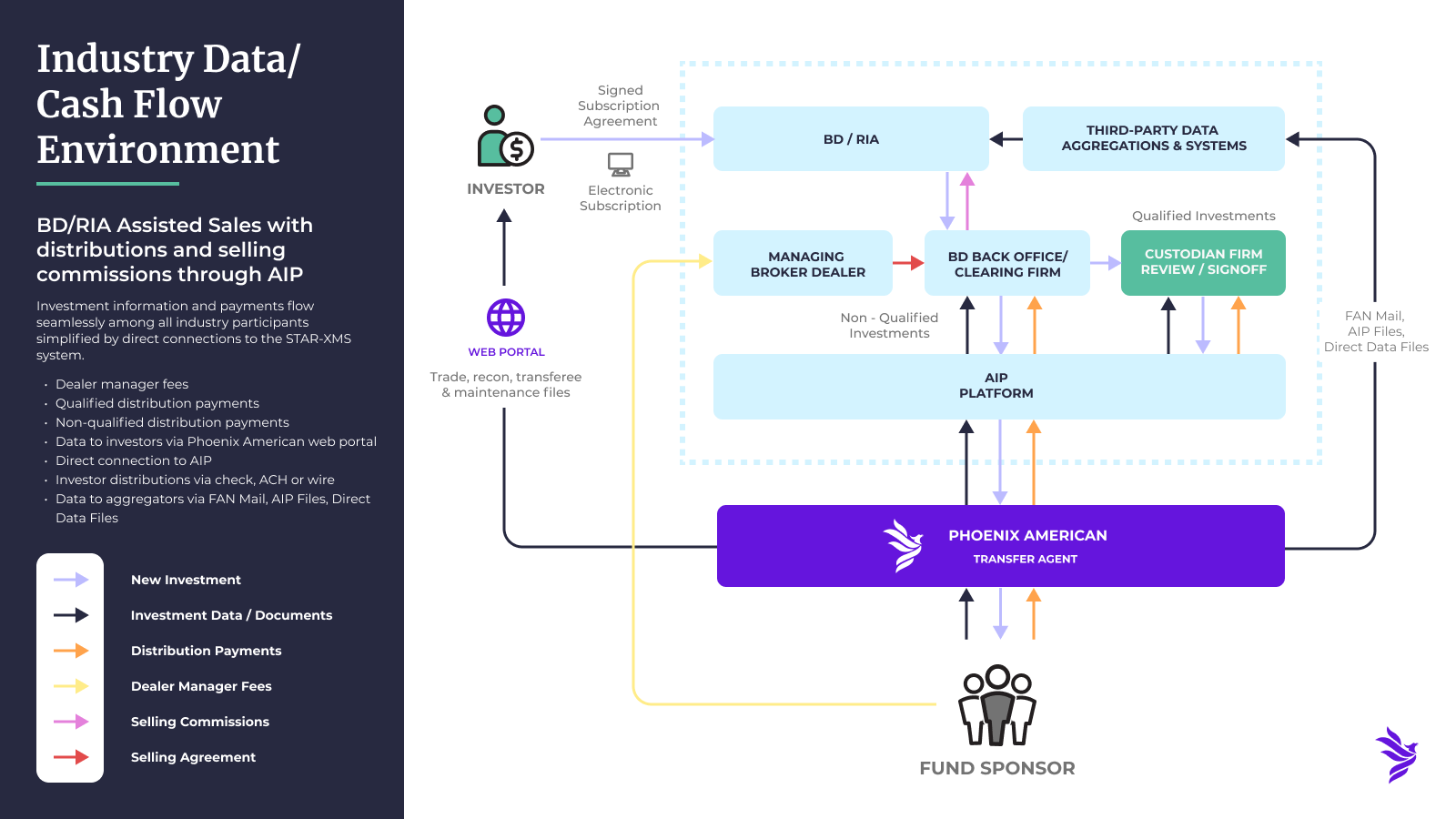The primary reason for an alternative investment fund sponsor to need a specialized alternative custodian is that traditional clearing firms are unable to hold certain assets. In such cases, alternative custodians become necessary, especially for products that don’t meet the criteria of traditional custodians. It is essential for advisors to understand that alternative custodians, while striving to keep processes simple, may handle assets differently, especially if they are unique or have many moving parts. As qualified investor capital can make up a very significant portion of overall fundraising, starting an early dialogue with custodians is important. There is much that needs to be understood and established with regard to their fees, onboarding processes and how they manage different assets. This preparation is increasingly vital for alternative fund sponsors as the demand for diverse and unique products in clients’ portfolios increases.
The Role of Custodians
Custodians for alternative investments primarily handle record-keeping, safekeeping of investments, and tax reporting for both qualified accounts (e.g. Individual Retirement Accounts (IRAs) and Health Savings Accounts (HSAs)) and non-qualified accounts. While IRAs require a custodian, non-qualified accounts do not, but custodians still offer similar services for them. This role extends to being a self-directed IRA custodian, a somewhat misleading term as most accounts involve financial advisors. Custodians do not provide investment advice or bear fiduciary responsibilities. Instead, they follow directives from clients and their advisors regarding investments.
Many of the largest traditional custodians focus on back-office support, providing information and assistance but acting primarily as broker-dealers. They offer full-service custodianship, encompassing a suite of products and assets, differing from firms that specialize in alternative assets. Specialized custodians provide consolidated billing and statements, simplifying the process for advisors and clients, especially the larger firms. They also generate tax documents like Form 1099, reducing the need for tracking multiple sources.
A Challenge to Traditional Custodians
The recent merger of two large brokerage houses highlighted the evolving role of custodians. The acquiring firm had to navigate the transfer of assets that were not previously on their platform. Despite the company’s increasing comfort with and integration into alternatives in recent years, the process demanded careful due diligence, establishing accurate reporting and a robust onboarding processes. Not all of the acquired firm’s assets could be onboarded to their platform. Collaborating with advisors and sponsors was necessary to find alternative custodians for specific assets. This achieved a smooth transition but demonstrated the need for specialized custodians for some alternative investment asset classes.
Alternative custodians have seen an influx of business due to these transitions, catering to assets that traditional custodians might not handle. They specialize in unique, one-off assets, providing an essential service for assets that don’t fit into the traditional custodial model. Their flexibility in accommodating these assets makes them a valuable resource for advisors requiring support beyond what major clearing firms offer.
Custodians may work in tandem with each other, acknowledging their strengths and limitations. They facilitate consolidated reporting by integrating data feeds from different custodians into a single aggregator. This collaboration ensures that advisors receive optimal support for a diverse range of assets, whether traditional or alternative, with each custodian playing to their strengths in the evolving financial landscape.
Custodians play a vital role in alternative investments, particularly in their relationships with investment sponsors and advisors. They emphasize the importance of early relationships with product sponsors, helping them educate advisors on which custodian is best suited for their specific offerings. A mutual understanding on custodians between sponsors and advisors can streamline the sales process, preventing potential issues during the onboarding of new investments, like delays or rejections due to non-compliance with a custodian’s criteria.
The Technological Evolution of Custodians
Custodians have evolved to become more integrated with straight-through processing technologies, overcoming previous challenges that hindered efficient operations in the alternative investment ecosystem. Custodians also now have better technological integration with third-party aggregators, making overall data flow more efficient.
New Investment Product Onboarding
The onboarding process for new products varies among custodians. Some custodians specializing in alternative assets have a relatively simple onboarding process, accepting the majority of assets without extensive due diligence. They focus on administrative feasibility rather than in-depth analysis of financials or investment quality. This streamlined process can approve new products quickly, often within a few days.
However, larger traditional custodians have more stringent criteria. They require investments to be brought by advisors, not sponsors, and look for specific audits and SEC registrations. Their focus is on the investment’s feasibility within their narrower band of accepted products, considering the structure, size and other factors.
Despite these differences, custodians generally agree on certain non-negotiables. For instance, they may reject poorly documented or dubious investments. Regulatory constraints also play a role. For example, national banks cannot custody certain assets like cannabis due to regulatory restrictions.
The onboarding process for new products varies among custodians. Some custodians specializing in alternative assets have a relatively simple onboarding process, accepting the majority of assets without extensive due diligence. They focus on administrative feasibility rather than in-depth analysis of financials or investment quality. This streamlined process can approve new products quickly, often within a few days.
However, larger traditional custodians have more stringent criteria. They require investments to be brought by advisors, not sponsors, and look for specific audits and SEC registrations. Their focus is on the investment’s feasibility within their narrower band of accepted products, considering the structure, size and other factors.
Despite these differences, custodians generally agree on certain non-negotiables. For instance, they may reject poorly documented or dubious investments. Regulatory constraints also play a role. For example, national banks cannot custody certain assets like cannabis due to regulatory restrictions.
Unique Features of Alternative Assets
Custodians for alternative investments must navigate the complexities of various assets, particularly when dealing with unique features like coupons, maturity dates and individual investor specifics. This makes it crucial for them to understand how assets will be represented on statements and to communicate effectively with clients about these representations.
The role of custodians is thus multifaceted, encompassing the facilitation of investment onboarding, ensuring compliance with regulatory standards and adapting technological capabilities for smoother operations. Their role is critical in providing advisors and sponsors with efficient, compliant and reliable custody services.
The Future of Custodians for Alternatives
The future of custody services is heavily focused on technological advancements and improving efficiency. This includes streamlining the purchase process of alternative assets, integrating with data aggregators and adopting electronic workflows to reduce paperwork and accelerate processes. However, challenges like data uniformity and the cost of implementing such technologies remain significant hurdles. Despite advancements, the process of managing alternative assets still involves considerable manual work, necessitating experienced teams who can swiftly address any issues.
The role of custodians is evolving to meet the growing demand for alternative assets. This evolution calls for a balance between technological integration and maintaining a high level of expertise and personalized service. For advisors, having relationships with both traditional and alternative custodians ensures they can offer the best possible solutions to their clients, reflecting the diverse nature of modern investment portfolios.






